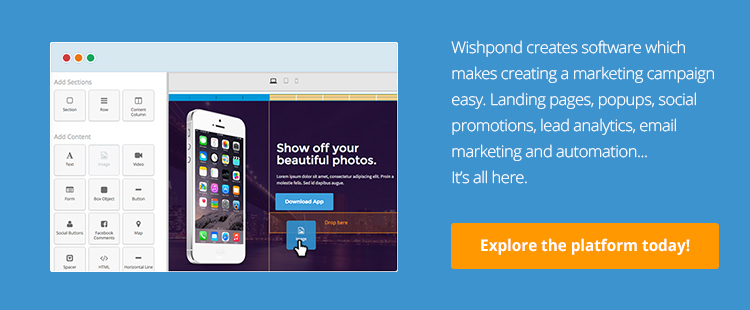Split testing, also known as A/B testing, is the process of testing two variations of your landing page to see which performs better.
To accomplish a successful split test you must change one variable only on the landing page that can then be sent to half your audience each. This way you can determine what element, two different images for example, is responsible for a change. After a period of time, say one month, you would check the analytics and continue using the higher converting image only.
For the complete answer to “What is split testing (also known as A/B testing)?” check out our article 7 Reasons Why Your Split Tests Aren’t Working.
Split testing is an invaluable digital marketing process because it produces actionable data on what you could be doing better.
What are some examples of things you could split test?
- Countdown timers vs. no countdown timers
- Changes in button colors
- Using merge tags to put a user’s name in a headline vs a static headline
- Action oriented CTA’s vs passive CTA’s (example: “Start Today” vs. “Start”)
- Testimonials vs no testimonial
- Location of the CTA (above the fold vs. below the fold)
What should you consider when creating a split test?
Before you start testing anything you need to determine who the audience you’re reaching is and what you want them to accomplish. Then you have to choose a large enough variable to change so there will be a noticeable effect on the outcomes.
You also need to be sure your tests are run to what’s called “statistical significance.” For instance, if you only showed your landing page variation to 5 people and 3 of them converted, you’d have a 60% conversion rate. That does not necessarily mean it’s actually converting better than a control which has seen 1200 people, 600 of which have converted. It’s too soon to know.
Here’s an example of an A/B split test we’re running on one of our blog click popups:

As you can see, this variation is winning by 3.7%, but we’re only 79% sure it will end up winning. We need to hold off on implementing the variation until it’s reached at least a 95% likelihood.
Let’s look at an Asana landing page and see what things we could test.

From the first glance I see that this landing page is aesthetically beautiful. But there are always things you can split test.
Asana could test things like:
- A different landing page headline
- A video preview
- Images or different color backgrounds
- Customer testimonials
- Different CTA text
If the amount of emails entered (the conversion goal, or key-performance-indicator) increases when a video section is added above the client logos, then Asana would continue using that format.
Split testing should always be a constant in your digital marketing strategy to see what is working and what isn’t. Plan. Test. Implement.


